| Regulatory Alert – New Federal Air Regulation for Chromium Launched for Finishing Industry: The NASF Government Affairs team recently met with EPA officials, who informed NASF that they have begun making plans to conduct the review of new control technology and work practices that may be available to further reduce hexavalent chromium emissions from chromium electroplating and anodizing operations.
Regulatory Alert – EPA Issues Long-Awaited Milestone Federal Health Assessment for Hexavalent Chromium: As NASF has anticipated, EPA has now completed its multi-year review for hexavalent chromium this month, with publication of its massive science document highlighting the extensive literature and studies on health effects for the chemical. This document is not a regulation or standard but will serve as the basis for future U.S. regulation.
House Committee Republicans Issue Report on How White House is Assessing Regulatory Impacts on Small Business: The Chairman of the House Committee on Small Business, Rep. Roger Williams (R-TX), along with the panel’s Republican members, recently released a staff report that criticized the Biden Administration’s consideration of small business regulatory burdens. The report notes that the Biden Administration has issued 891 final rules with regulatory costs of $1.47 trillion and 232.4 million paperwork hours to comply with those regulations.
Washington Forum, September 16-18, 2024: Join us at the Washington Forum in this important election year, with the event scheduled to take place September 16-18, 2024 at the historic Willard Hotel in Washington, DC. Program highlights include top election analyst Charlie Cook, who will keynote the Forum luncheon. Please make your plans to attend this key industry event. Registration is available on the NASF website.
For more details on these topics, please see our discussion below…
Regulatory Alert – New Federal Air Regulation Launched for Finishing Industry: EPA is Now Advancing a Revised Rulemaking Chromium Electroplating and Anodizing Operations
The NASF Government Affairs team recently met with EPA officials, who informed NASF that they have begun making plans to conduct the review of new control technology and work practices that may be available to further reduce hexavalent chromium emissions from chromium electroplating and anodizing operations.
While the surface finishing industry has been very successful in reducing hexavalent chromium emissions (i.e., NASF has noted the industry’s 99.9 percent reduction since 1995), the technology review will evaluate any new control technologies and work practices that can effectively reduce emissions further. NASF has offered to have industry representatives provide EPA with a briefing on the status of available control technologies and work practices in late 2024 or early 2025.
EPA Requirements under the Federal Clean Air Act
Under the Clean Air Act, EPA must conduct a technology review every eight years to determine if it needs to revise existing federal standards for chromium electroplating and anodizing operations. The last round of chromium air toxic standards was issued in September 2012 and the rule review required by EPA is now overdue. The agency has not yet been sued to accelerate its regulatory action on chromium and is not yet subject to a court-ordered consent decree to conduct the technology review.
Calendar Outlook for a Proposed and Final Rulemaking
By January 2025, EPA officials expect to have a better idea on the rulemaking schedule, but the proposed rule could be as soon as Fall 2025, with a final rule by Fall 2026. This schedule may be a bit ambitious, as the agency just issued its task order to engage its engineering contractor for the rulemaking and may need to conduct a small business impact panel for any proposed changes to the NESHAP.
NASF will continue to work with EPA officials and keep NASF members informed nationwide on any new developments. If you have any questions or would like more information on this rulemaking, please contact Jeff Hannapel or Christian Richter with NASF at jhannapel@thepolicygroup.com or crichter@thepolicygroup.com.
Regulatory Alert – EPA Issues Milestone Federal Health Assessment for Hexavalent Chromium
As NASF has anticipated, EPA has now completed its multi-year review for hexavalent chromium with publication of its massive science document highlighting the extensive literature and studies on health effects for the chemical.
Final Assessment Includes Scientific Peer Review and Recommendations
The agency’s formal scientific review has been developed under EPA’s Integrated Risk Information System (IRIS) and includes a follow up analysis and response to the EPA Science Advisory Board’s Fall 2023 review and recommendations for improving the agency’s work.
One of the most important recommendations from the Science Advisory Board from last fall was addressing what top scientists on the expert review panel highlighted was the agency’s overly conservative approach to interpreting the scientific literature and various studies in a way that could lead to dramatically revamping current regulatory federal and state requirements and standards to extremely strict levels.
Early Implications of the IRIS Assessment
An earlier draft from the agency last year included calculations that translated to a “safe” level of 35 to 70 parts per trillion (ppt) in tap water, far below natural background levels of approximately 1 – 5 ppb depending on regional variation.
The final draft, which has incorporated several key changes, could translate to a “safe” level in tap water closer to 1 part per billion (ppb) or possibly higher. However, the science document is not a requirement or regulation, and key regulatory decisions will be made within the next 3 years, with a focus on a new national drinking water and cleanup standards. A challenge to the decision may be in order.
A recent compliance cost study by the American Water Works has shown that lowering the federal drinking water standard as low as only 1 part per billion (ppb) in comparison to the existing standard of 100 ppb for total chromium would result in an annualized cost to the nation’s drinking water utility infrastructure of between $7 and $16 billion.
This is a significant development for the future, and NASF will continue to be closely engaged in discussions with a range of officials and affected sectors moving into the fall and will provide a brief update on the latest developments on this topic during the Washington Forum in September.
House Committee Republicans Issue Report on How White House is Assessing Regulatory Impacts on Small Business
The Chairman of the House Committee on Small Business, Rep. Roger Williams (R-TX), along with the panel’s Republican members, recently released a staff report that criticized the Biden Administration’s consideration of small business regulatory burdens.
New Regulatory Costs Exceeded $1 Trillion with a Surge of Activity in April
According to the report, the Biden Administration passed 891 final rules with regulatory costs of $1.47 trillion and 232.4 million paperwork hours to comply with those regulations, and in an April surge of agency activity a number of rules were finalized with new regulatory costs of $875 billion.
A key statute, the Regulatory Flexibility Act (RFA), requires federal agencies to ensure that new regulations do not disproportionately burden small businesses and other small entities. The RFA also imposes protocols on federal agencies for assessing the specific potential impacts of regulation on small businesses, including economic impacts. One of the hallmarks of the law is that EPA, the Department of Labor and other agencies are required to convene a panel of small business representatives to provide input on potential impacts from a regulation before it is proposed.
List of Concerns Point to Shortfalls in Properly Assessing Impacts on Small Businesses
The report included several major findings on agency deficiencies in complying with the requirements of the Regulatory Flexibility Act:
- Avoiding Assessments for Small Business Impacts – Agencies have improperly concluded that rules have no small business impact in order to avoid conducting the required analysis under the law, leading to rules moving to final action that have not adequately assessed the consequences for small entities.
- Underestimating Costs and Scope of Impacts – Agencies consistently underestimated both the regulatory costs and the number of impacted small businesses when conducting an RFA analysis. Agencies also failed to adequately consider less burdensome alternatives, or chose to finalize a rule that is even more harmful to small businesses than other alternatives without adequate justification.
- Failure to Assess Overlapping or Conflicting Rules – Agencies repeatedly failed to appropriately assess if a rule is duplicative or conflicts with other rules, which causes small businesses to potentially face multiple overlapping regulations from both within the same agency and across the federal government.
The report concluded that many agencies are not properly following their obligations with regard to small business needs and, as a consequence, are imposing unnecessary burdens on small businesses.
NASF Engaged on Major Rules to Ensure Surface Finishing Impacts Are Assessed
Making sure that federal agencies adequately assess the potential impacts of new regulations on small businesses will be critical for NASF and the surface finishing industry in the next year, particularly with EPA’s focus on a number of rules for the industry including, among others, wastewater discharge standards for PFAS under the Clean Water Act and newly emerging chromium air emissions requirements from surface finishing operations under the federal Clean Air Act.
If you have any questions or would like additional information on this issue, please contact Jeff Hannapel or Christian Richter with NASF at jhannapel@thepolicygroup.com or crichter@thepolicygroup.com.
Washington Forum, September 16-18, 2024
The Washington Forum will take place September 16-18, 2024 at the historic Willard Hotel in Washington, D.C. Please make your plans to attend this key industry event. Information regarding registration is available on the NASF website.
Forum Topics and Speakers
The Forum will include presentations and briefings from national and global experts on pertinent policy, technical, regulatory, and management issues impacting the surface finishing industry, including , speakers from EPA, DOD, the automotive supply chain, the Nickel Institute, leaders of U.S. drinking water agencies, and the U.S. Chamber of Commerce.
Top Analyst Charlie Cook to Keynote Forum Luncheon
Longtime expert election analyst Charlie Cook will be keynote the Forum luncheon and provide an update and forecast on the upcoming election. In addition, Washington Forum participants also have the option during the event to meet with their congressional representatives and staff to educate them on the importance and impact of the surface finishing industry, the challenges facing companies across key sectors and regions, and specific policy priorities of concern.
We look forward to seeing you at the Washington Forum this year. If members have questions or would like additional information about the Washington Forum, please contact Jeff Hannapel or Christian Richter with NASF at jhannapel@thepolicygroup.com or cichter@thepolicygroup.com.
NASF 1000
The NASF 1000 program was established to ensure that the surface finishing industry would have resources to effectively address regulatory, legislative and legal actions impacting the industry, NASF members and their workplaces. All funds from the NASF 1000 program are used exclusively to support specific projects and initiatives that fall outside the association’s day-to-day public policy activities. The commitment to this program is one of the most vital contributions made in support of surface finishing and directly shapes the future of the industry.
The sustained commitment from industry leaders has helped the NASF remain strong and credible in informing regulatory decisions across the nation. Specific projects funded through the NASF 1000 make a measurable difference in how the industry navigates emerging challenges, communicates credibly with policy makers, and advocates for a strong science base for rules or standards that affect surface finishing.
Please consider supporting the NASF 1000 program. If you have any questions or would like additional information regarding the NASF 1000 program or the broad array of NASF public policy activities, please contact Jeff Hannapel with NASF at jhannapel@thepolicygroup.com. |

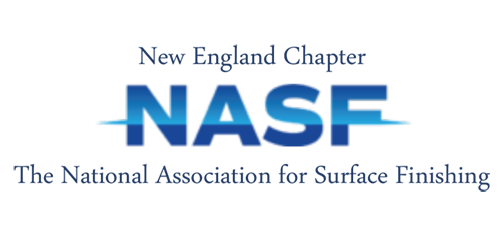



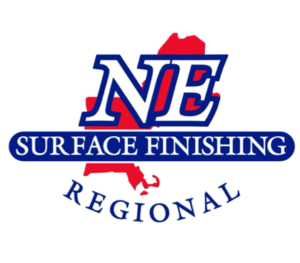
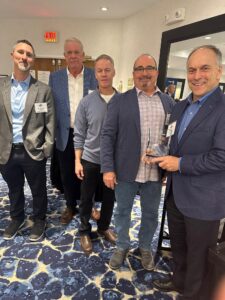
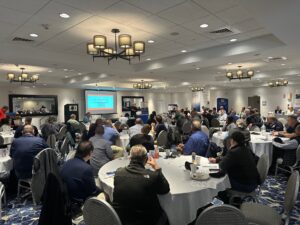


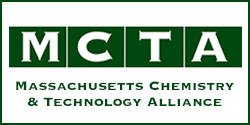
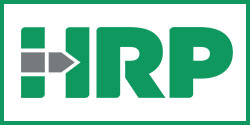
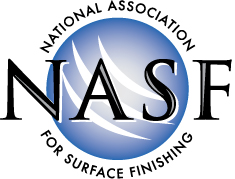
 New England Chapter of NASF is an official chapter of
New England Chapter of NASF is an official chapter of